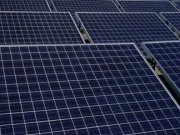
Following the announcement by the Department of Energy and Climate Change (DECC) concerning the support for solar PV under the Renewables Obligation (RO)
The STA recommended an initial cut of 10% - to 1.8 ROCs from the current level of 2 ROCs per MWh. However DECC has decided to reduce support for solar power to 1.6 ROCs – that is by 20%. This is higher than the initial 1.5 ROCs initially proposed by the department and is also an improvement on the degression rate contained in previous DECC proposals.
“There are pros and cons here” said Paul Barwell, CEO of the STA. “We are somewhat disappointed with the decision on the level of ground-mounted support for 2013.We brought DECC and the industry together to provide the data needed to make an evidence-based decision. But DECC has at least agreed an improvement on previous proposals and the degression rates are much more sensible.”
Nevertheless, the decision means that solar deployment could be overly constrained when, even with a fraction more support, it would still be cheaper than many other low-carbon technologies, Barwell added.
“It is difficult to understand why the Government is aiming for 'slow growth' in this cost-effective technology when we have a challenging renewable energy target to meet” he said. “Given how the RO has been set on the low side for solar, we will be pressing DECC and Ofgem to act quickly to remove unfair barriers to solar power that impose unnecessary costs, such as timely grid connections. We are also keen to see action to support the stability of the ROC regime.”
The STA has welcomed the decision to drop the proposed equivalence with FIT levels as the association feels this would not have been a fair mechanism for setting RO support. It is also pleased to have won recognition of the mid-size roof-mounted solar sector, which has yet to take off in the UK, but which has huge potential. This sub-sector has been offered a new band of 1.7 ROCs.
“We are pleased to see that our hard work on mid-scale roof-mounted solar has paid off as it has finally gained recognition from Government” Paul Barwell said. “The STA has long argued this sub-sector needs greater support, and we will be looking at the economics of the 1.7 ROC level. The STA also recommends that this sector should be supported within the Feed-in Tariff (FiTS), which is much more user-friendly for investors outside the power industry.”
The STA was surprised to read that the National Grid are cited in the government’s announcement saying deploying more than 10GW of solar PV would make balancing the grid 'significantly more challenging' in its current form, with a technical potential for 20GW. In the view of the STA this is incorrect and the grid will take significantly more capacity than this. Solar and wind provide a complementary generation profile that has appears not to have been considered.
Further information:

